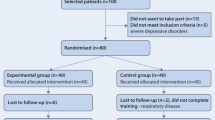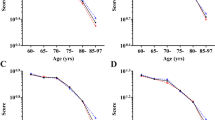Abstract
Background
Executive function is an important cognitive factor in gait and balance control. Weakening of balance system components and executive functions due to aging may affect walking and balance and increase the risk of falling.
Aims
The present study aimed to investigate the relationship between balance and executive function in older individuals and the contributions of physical activity and depression to this relationship.
Methods
A total of 84 healthy individuals aged 60 and over were included in the study. In the study, the Timed Up and Go Test (TUG), Mini Balance Evaluation Systems Test (Mini-BESTest), Digit Symbol Substitution Test (DSST), Trail Making Test A and B (TMT A and TMT B), Physical Activity Scale for the Elderly (PASE), and Geriatric Depression Scale (GDS) were applied.
Results
The Mini-BESTest and TUG correlated with DSST, TMT A, and TMT B. GDS was correlated with TUG. PASE was correlated with Mini-BESTest and TUG. Executive functions differed according to education level; DSST, TMT B, and GDS were effective in fall history.
Discussion
There was a significant relationship between balance and executive function. It was found that balance and walking speed increased as executive function skills increased. Depression and physical activity are associated with balance and gait speed.
Conclusions
Balance and executive functions are related to each other, and physical activity and depression contribute to this relationship. In order to protect against the negative effects of aging, cognitive and physical training can be performed to prevent balance and executive function declines.
Similar content being viewed by others
Data availability
The dataset from this study is available from the corresponding author upon reasonable request.
References
Brosel S, Strupp M (2019) The vestibular system and ageing. Subcell Biochem 91:195–225. https://doi.org/10.1007/978-981-13-3681-2_8
Cristofori I, Cohen-Zimerman S, Grafman J (2019) Executive functions. Handb Clin Neurol 163:197–219. https://doi.org/10.1016/B978-0-12-804281-6.00011-2
Buracchio TJ, Mattek NC, Dodge HH et al (2011) Executive function predicts risk of falls in older adults without balance impairment. BMC Geriatr 11:74. https://doi.org/10.1186/1471-2318-11-74
Schättin A, Arner R, Gennaro F et al (2016) Adaptations of prefrontal brain activity, executive functions, and gait in healthy elderly following exergame and balance training: a randomized-controlled study. Front Aging Neurosci 8:278. https://doi.org/10.3389/fnagi.2016.00278
Springer S, Giladi N, Peretz C et al (2006) Dual-tasking effects on gait variability: the role of aging, falls, and executive function. Mov Disord 21:950–957. https://doi.org/10.1002/mds.20848
Demnitz N, Esser P, Dawes H et al (2016) A systematic review and meta-analysis of cross-sectional studies examining the relationship between mobility and cognition in healthy older adults. Gait Posture 50:164–174. https://doi.org/10.1016/j.gaitpost.2016.08.028
Miyazaki T, Kiyama R, Nakai Y et al (2021) Relationships between gait regularity and cognitive function, including cognitive domains and mild cognitive impairment, in community-dwelling older people. Healthcare (Basel, Switzerland) 9:1571. https://doi.org/10.3390/healthcare9111571
Ble A, Volpato S, Zuliani G et al (2005) Executive function correlates with walking speed in older persons: the InCHIANTI study. J Am Geriatr Soc 53:410–415. https://doi.org/10.1111/j.1532-5415.2005.53157.x
Holtzer R, Verghese J, Xue X et al (2006) Cognitive processes related to gait velocity: results from the Einstein Aging Study. Neuropsychology 20:215–223. https://doi.org/10.1037/0894-4105.20.2.215
Ferriero GG (2016) The Mini-BESTest: a review of psychometric properties. Int J Rehabil Res Internationale Zeitschrift fur Rehabilitationsforschung Revue internationale de recherches de readaptation 39:97–105. https://doi.org/10.1097/MRR.0000000000000153
Browne W, Nair BKR (2019) The Timed Up and Go test. Med J Aust 210:13-14.e1. https://doi.org/10.5694/mja2.12045
Gaertner B, Wagner M, Luck T et al (2018) Normative data for the Digit Symbol Substitution Test in a population-based sample aged 65–79 years: Results from the German Health Interview and Examination Survey for Adults (DEGS1). Clin Neuropsychol 32:114–132. https://doi.org/10.1080/13854046.2018.1484168
Tombaugh TN (2004) Trail Making Test A and B: normative data stratified by age and education. Arch Clin Neuropsychol 19:203–214. https://doi.org/10.1016/S0887-6177(03)00039-8
Ayvat E, Kilinç M, Kirdi N (2017) The Turkish version of the Physical Activity Scale for the Elderly (PASE): its cultural adaptation, validation, and reliability. Turk J Med Sci 47:908–915. https://doi.org/10.3906/sag-1605-7
Yesavage JA, Brink TL, Rose TL et al (1982) Development and validation of a geriatric depression screening scale: a preliminary report. J Psychiatr Res 17:37–49. https://doi.org/10.1016/0022-3956(82)90033-4
Sousa NMF, Macedo RC, Brucki SMD (2021) Cross-sectional associations between cognition and mobility in Parkinson’s disease. Dement Neuropsycholog 15:105–111. https://doi.org/10.1590/1980-57642021dn15-010011
van Iersel MB, Kessels RP, Bloem BR et al (2008) Executive functions are associated with gait and balance in community-living elderly people. J Gerontol Ser A Biol Sci Med Sci 63:1344–1349. https://doi.org/10.1093/gerona/63.12.1344
Perera S, Patel KV, Rosano C et al (2016) Gait speed predicts incident disability: a pooled analysis. J Gerontol Ser A Biol Sci Med Sci 71:63–71. https://doi.org/10.1093/gerona/glv126
Schuch FB, Vancampfort D, Firth J et al (2018) Physical activity and incident depression: a meta-analysis of prospective cohort studies. Am J Psychiatry 175:631–648. https://doi.org/10.1176/appi.ajp.2018.17111194
Brandler TC, Wang C, Oh-Park M et al (2012) Depressive symptoms and gait dysfunction in the elderly. Am J Geriatr Psychiatry 20:425–432. https://doi.org/10.1097/JGP.0b013e31821181c6
Pearce M, Garcia L, Abbas A et al (2022) Association between physical activity and risk of depression. JAMA Psychiat 79:550. https://doi.org/10.1001/jamapsychiatry.2022.0609
Anstey KJ, Wood J, Kerr G et al (2009) Different cognitive profiles for single compared with recurrent fallers without dementia. Neuropsychology 23:500–508. https://doi.org/10.1037/a0015389
Nuzum H, Stickel A, Corona M et al (2020) Potential benefits of physical activity in MCI and dementia. Behav Neurol 2020:7807856. https://doi.org/10.1155/2020/7807856
Stern Y, MacKay-Brandt A, Lee S et al (2019) Effect of aerobic exercise on cognition in younger adults: a randomized clinical trial. Neurology 92:e905–e916. https://doi.org/10.1212/WNL.0000000000007003
Yu F, Vock DM, Zhang L et al (2021) Cognitive effects of aerobic exercise in Alzheimer’s disease: a pilot randomized controlled trial. J Alzheimer’s Dis JAD 80:233–244. https://doi.org/10.3233/JAD-201100
Thomas E, Battaglia G, Patti A et al (2019) Physical activity programs for balance and fall prevention in elderly: a systematic review. Medicine 98:e16218. https://doi.org/10.1097/MD.0000000000016218
Voos MC, Custódio EB, Malaquias J Jr (2011) Relationship of executive function and educational status with functional balance in older adults. J Geriatr Phys Ther (2001) 34:11–18. https://doi.org/10.1097/JPT.0b013e3181ff2452
Yassuda MS, Diniz BS, Flaks MK et al (2009) Neuropsychological profile of Brazilian older adults with heterogeneous educational backgrounds. Arch Clin Neuropsychol 24:71–79. https://doi.org/10.1093/arclin/acp009
Tabue-Teguo M, Perès K, Simo N et al (2020) Gait speed and body mass index: results from the AMI study. PLoS ONE 15:e0229979. https://doi.org/10.1371/journal.pone.0229979
Cancela Carral JM, Ayán C, Sturzinger L et al (2019) Relationships between body mass index and static and dynamic balance in active and inactive older adults. J Geriatr Phys Ther (2001) 42:E85–E90. https://doi.org/10.1519/JPT.0000000000000195
Harada CN, Natelson Love MC, Triebel KL (2013) Normal cognitive aging. Clin Geriatr Med 29:737–752. https://doi.org/10.1016/j.cger.2013.07.002
Fjell AM, Westlye LT, Amlien I et al (2009) High consistency of regional cortical thinning in aging across multiple samples. Cereb Cortex (New York, N.Y.: 1991) 19:2001–2012. https://doi.org/10.1093/cercor/bhn232
Zheng JJ, Delbaere K, Close JC et al (2011) Impact of white matter lesions on physical functioning and fall risk in older people: a systematic review. Stroke 42:2086–2090. https://doi.org/10.1161/STROKEAHA.110.610360
Juan SMA, Adlard PA (2019) Ageing and cognition. Subcell Biochem 91:107–122. https://doi.org/10.1007/978-981-13-3681-2_5
Caliskan H, Sahin UK, Baydan M et al (2023) Balance performance measured by posturography in mild-moderate Alzheimer’s Disease: an undervalued assessment. Geriatric Nurs 53:33–39. https://doi.org/10.1016/j.gerinurse.2023.06.019
Schoene D, Valenzuela T, Lord SR et al (2014) The effect of interactive cognitive-motor training in reducing fall risk in older people: a systematic review. BMC Geriatr 14:1–22. https://doi.org/10.1186/1471-2318-14-107
Galle SA, Deijen JB, Milders MV et al (2023) The effects of a moderate physical activity intervention on physical fitness and cognition in healthy elderly with low levels of physical activity: a randomized controlled trial. Alzheimer’s Res Ther. https://doi.org/10.1186/s13195-022-01123-3
Norouzi E, Vaezmosavi M, Gerber M et al (2019) Dual-task training on cognition and resistance training improved both balance and working memory in older people. Phys Sportsmed 47:471–478. https://doi.org/10.1080/00913847.2019.1623996
Hersi M, Irvine B, Gupta P et al (2017) Risk factors associated with the onset and progression of Alzheimer’s disease: a systematic review of the evidence. Neurotoxicology 61:143–187. https://doi.org/10.1016/j.neuro.2017.03.006
Ali N, Tian H, Thabane L et al (2022) The effects of dual-task training on cognitive and physical functions in older adults with cognitive impairment; A systematic review and meta-analysis. J Prev Alzheimer’s Dis 9:359–370. https://doi.org/10.14283/jpad.2022.16
Combourieu Donnezan L, Perrot A, Belleville S et al (2018) Effects of simultaneous aerobic and cognitive training on executive functions, cardiovascular fitness and functional abilities in older adults with mild cognitive impairment. Ment Health Phys Act 15:78–87. https://doi.org/10.1016/j.mhpa.2018.06.001
Curlik DM 2nd, Shors TJ (2013) Training your brain: Do mental and physical (MAP) training enhance cognition through the process of neurogenesis in the hippocampus? Neuropharmacology 64:506–514. https://doi.org/10.1016/j.neuropharm.2012.07.027
Funding
None.
Author information
Authors and Affiliations
Corresponding author
Ethics declarations
Conflict of interest
The authors report no conflicts of interest and certify that no funding has been received for this study or the preparation of this manuscript.
Ethical approval
The study protocol was approved by the Non-Interventional Ethics Committee of Hacettepe University, (Project number: GO 20/842, Date 2021–02-15). All participants give their written informed consent to participate in the study.
Consent to participate
The informed consent of the patients was obtained.
Additional information
Publisher's Note
Springer Nature remains neutral with regard to jurisdictional claims in published maps and institutional affiliations.
Rights and permissions
Springer Nature or its licensor (e.g. a society or other partner) holds exclusive rights to this article under a publishing agreement with the author(s) or other rightsholder(s); author self-archiving of the accepted manuscript version of this article is solely governed by the terms of such publishing agreement and applicable law.
About this article
Cite this article
Ödemişlioğlu-Aydın, E.A., Aksoy, S. Evaluation of balance and executive function relationships in older individuals. Aging Clin Exp Res 35, 2555–2562 (2023). https://doi.org/10.1007/s40520-023-02534-4
Received:
Accepted:
Published:
Issue Date:
DOI: https://doi.org/10.1007/s40520-023-02534-4




